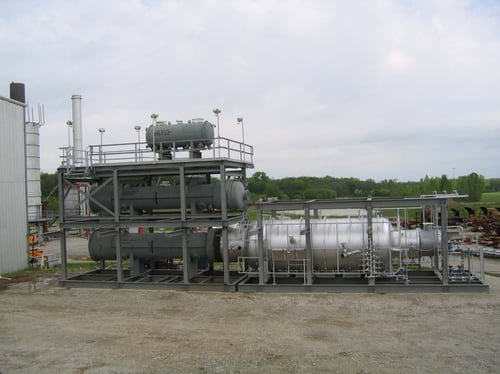
Refineries processing high sulfur crude oils produce significant quantities of by product hydrogen sulfide (H2S), also called acid gas. This gas is often processed in a Claus Sulfur Recovery Unit (SRU).
The Claus process converts acid gas (H2S) into elemental sulfur in an oxygen-deficient combustion process and then liquid sulfur from the condenser runs through a seal leg into a covered pit from which it is pumped to trucks or railcars for shipment to end users. Approximately 65 to 70 percent of the sulfur is recovered. The SCOT Process (Shell Claus Off-gas Treating Process) was developed by Shell, and introduced in the early seventies as an attractive process for improving the efficiency of a Claus sulfur recovery unit. The process consists of four combustion processes (as well as catalytic reactors which are not discussed here):
1. Reaction furnace
2. Inline reheater
3. Reducing gas generator
4. Tail gas incinerator
The CFD analysis discussed in this article considers only the second process, the inline reheater. The inline reheater heats the acid gas by mixing it with hot reducing products of combustion. An important design consideration is that the products of combustion being mixed are reducing. If O2 slip (uncombusted O2) is available to mix with the acid gas, the H2S can be oxidized to undesirable compounds (e.g., SO3, SO4, H2SO4) that can attack refractories and damage the environment.
Conclusions
This paper has presented the CFD analysis of the inline reheater section of a SCOT system. The present analysis has indicated that the mixing in the near burner zone is very good and that O2 carryover is not predicted to occur. Analysis of the chemical composition in the reactor using the thermodynamic equilibrium code CET89 facilitated the prediction of equilibrium acetylene mole fractions at locations through out the vessel. These mole fractions indicate that soot formation will not occur in the combustion zone or in the SRU tail-gas mixing zone.
The use of CFD analysis during the design phase of industrial combustion systems can significantly reduce the likelihood of startup and operating problems. In this case, issues such as long flames or soot production in the furnace would be very expensive to repair because the unit is operational continuously. System operation was tested via the follow-on performance cases. Data from these cases were also compared against experimental measurements (both measured pressure drop across various portions of the reactor and visual observation of soot formation). Based on these comparisons the reactor was constructed and installed and is successfully operating as expected.
Download Technical Paper